Trip Report: Alternative Fall Break in the Dominican Republic
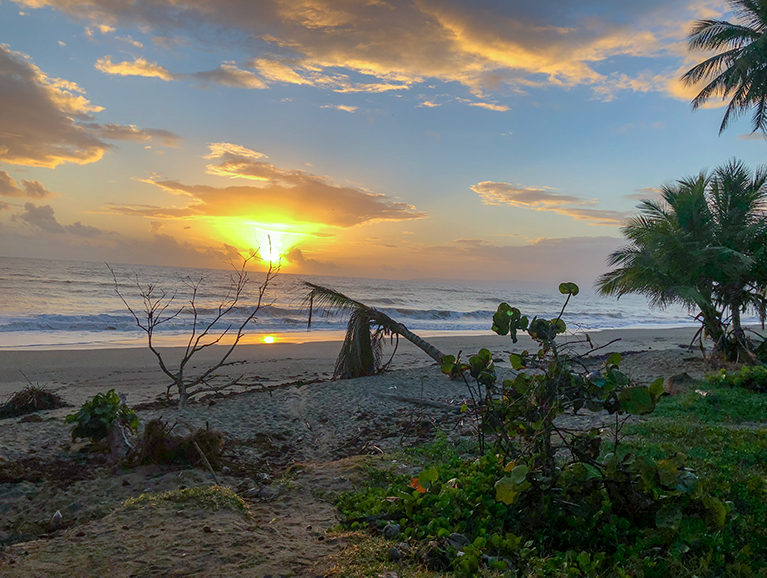
The Tickle College of Engineering sponsored an Alternative Fall Break to the Dominican Republic from August 11–17, 2018. Participating in the trip were Rachel Penumadu, Bradley Bennett, and Makalee Ruch, chemical engineering majors; Courtney Nakamura, biomedical engineering major; Megan Lamon, civil engineering major; and John Koelsch, architecture major. TCE International Coordinator Judith Mallory led the trip, whose details were managed in partnership with Discover Corps of San Diego, a sister organization of the Peace Corps.
- Read Brad Bennett’s trip report »
- Read John Koelsch’s trip report »
- Read Megan Lamon’s trip report »
- Read Courtney Nakamura’s trip report »
- Read Rachel Penumadu’s trip report »
- Read Makalee Ruch’s trip report »
The Dominican Republic is a sovereign state located on one side of the island of Hispaniola, in the Greater Antilles archipelago of the Caribbean Sea. It occupies the eastern five-eighths of the island, which it shares with the country of Haiti, and is one of two Caribbean islands that are shared by two countries, the other being Saint Martin. The Dominican Republic is the second-largest Caribbean nation by area (after Cuba) at over 18,000 square miles, and third-largest by population with approximately 10 million people. It is a democratic republic with a multi-party political system.
The country has the ninth-largest economy in Latin America and is the largest economy in the Caribbean and Central American region. Recent economic growth has been driven by construction, manufacturing, tourism, and mining. The country is the site of the second largest gold mine in the world. Recent growth has been driven by construction, manufacturing, tourism, and mining. The country has a high level of remittances as well. The Dominican Republic has a close relationship with the United States and Puerto Rico.
The country’s relationship with its neighbor Haiti is strained over mass Haitian migration to the Dominican Republic, with citizens of the Dominican Republic blaming the Haitians for increased crime and other social problems. In the mid-twentieth century, the economy of the two nations was comparable; since that time, the economy of the D.R. has grown while that of its neighbor has diminished. The situation in Haiti has been made worse by elements including internal power struggles, rapid population growth, environmental degradation, and trade embargoes.
The Dominican Republic is the most-visited island in the Caribbean. It is considered geographically diverse, being home to both the Caribbean’s tallest mountain peak, Pico Duarte, and the Caribbean’s largest lake and point of lowest elevation, Lake Enriquillo. The island has an average temperature 78.8 ° Fahrenheit, and great climatic and biological diversity.
The engineering group landed at the Cibao International Airport in Santiago de los Cabballeros, the D.R.’s second-largest city. It is the country’s third-busiest airport and about an hour and a half drive from the Discover Corps home base in on the North coast of the country in the Playa las Canas community of Gaspar Hernandez. The home base is a fenced property consisting of hut-like structures for lodging and cooking, and is where the group stayed for the week in country.
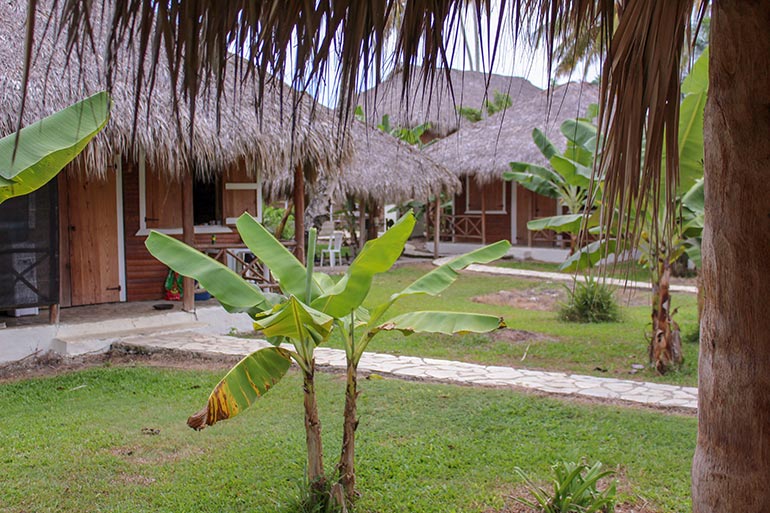
One of the projects to which the group was assigned was the building of a “bottle kitchen” in the rural community of Cano Dulce. Besides cleaning the community of waste, bottle structures teach environmental awareness, open the community to new building techniques, and provide a sense of ownership. In this case, the kitchen area, located in the rear of the home, had been framed in and was without walls. To construct the walls, wires were strung between the upright supports at approximately four inch intervals. This was done on the interior surface of the structure. On the exterior, a mesh resembling hardware cloth or chicken wire was attached to the uprights from floor to ceiling. This created a pocket of sorts, into which empty plastic bottles were placed. The bottles serve as insulation for the future wall. A bonus is that they stay out of the landfill. Bottles were first sorted as to size, for uniformity. Once the walls were filled with the bottles, concrete was applied by hand from the inside, much like a stucco finish. Concrete was mixed on the ground outside, then brought in one bucketful at a time to the kitchen area. Once dry, the wall would be considered complete and may be painted. This was a labor-intensive process, tackled by the engineers working in teams.
The plan was for concrete to be poured for the kitchen floor; after this step and the installation of bathroom fixtures, the house would be ready for occupancy by the owner. The students toured the community on foot, observing other bottle structures, and walked over a suspended cable bridge to visit a local beekeeper.
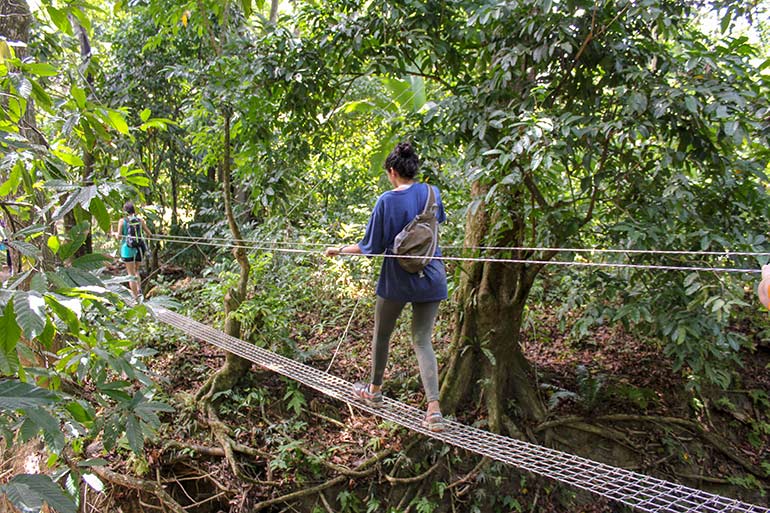
Another project involved laying a concrete floor in a new home near the La Grua area. Again, concrete was mixed on the ground, then transported to the interior of the home, this time via wheelbarrow. This proved tricky, as the ground was not smooth and the wheelbarrow had to travel up a ramp fashioned by a wood 2 x 4. Masons were on hand to oversee the process.
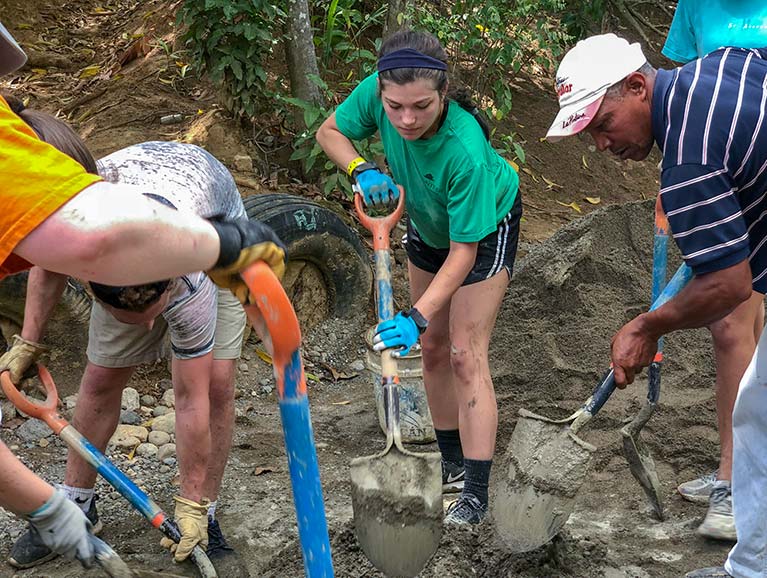
The students toured the community of La Grua, a Haitian refugee camp. These settlements are known as bateys. Many Haitians have fled Haiti for better economic conditions next door in the D.R. Children born to Haitian parents in the D.R. are not recognized by either country and are effectively stateless. This makes it difficult for them to receive a formal education or health services. Discover Corps is involved in efforts to help improve the living conditions here.
One of the side trips on the agenda was to the seaside town of Cabarete, which is somewhat touristy. Another stop was to the Dudú Ecological Park, home to a natural lagoon, caves, and gardens. The students visited three different grocery stores in various locations, in order to experience a taste of local life on the island. Evening discussions focused on Hatian-Dominican relations as well as the Seven Elements of Human Security as outlined by the United Nations. One of the final activities was a trip to the town of Sosua, first for snorkeling in the ocean, followed by a beach visit.
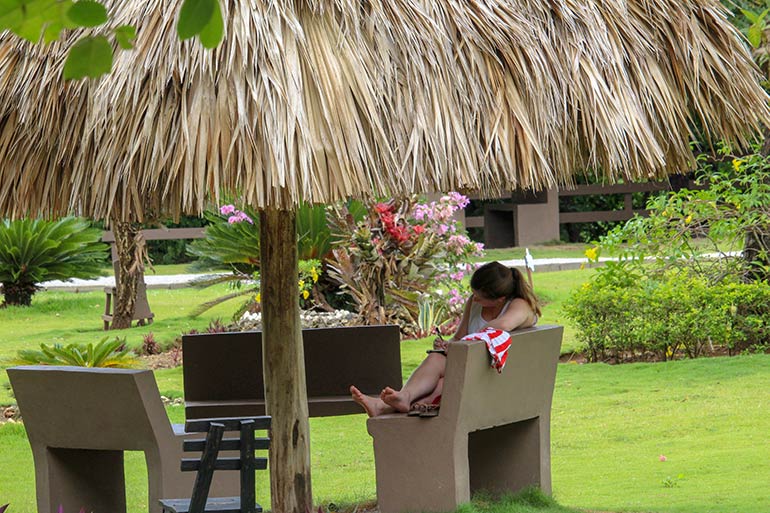
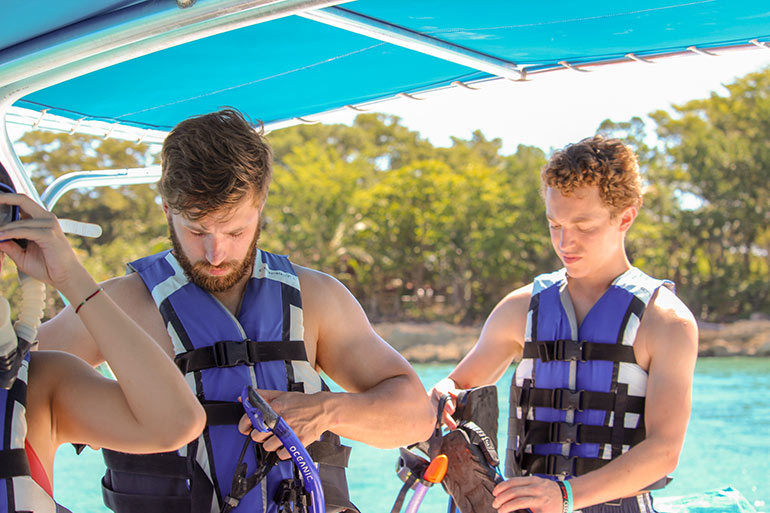
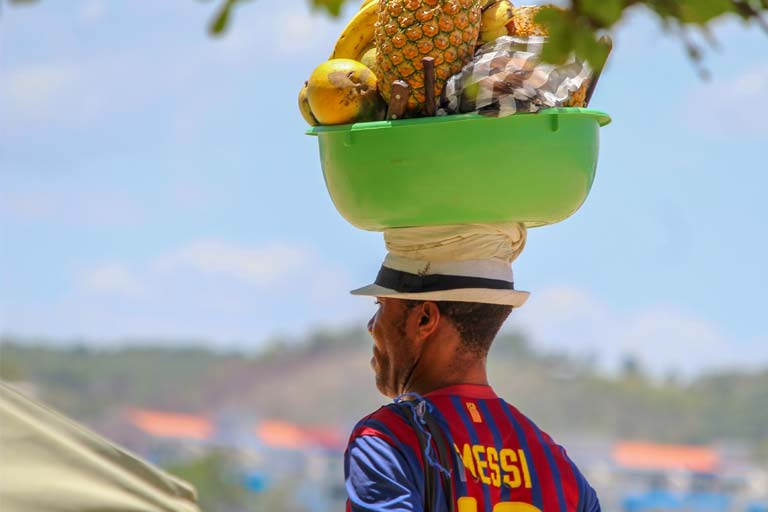
After several days of work on community service projects and cultural touring, the group returned to Knoxville to prepare for the start of the Fall Semester.